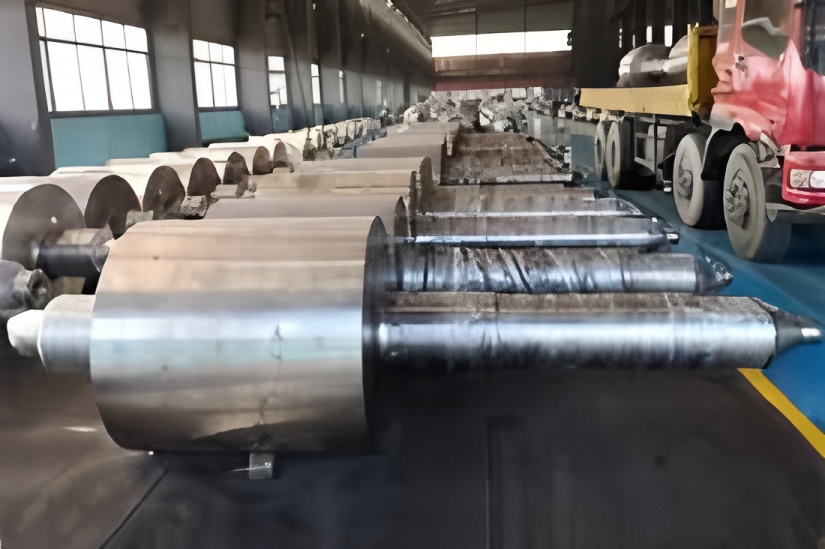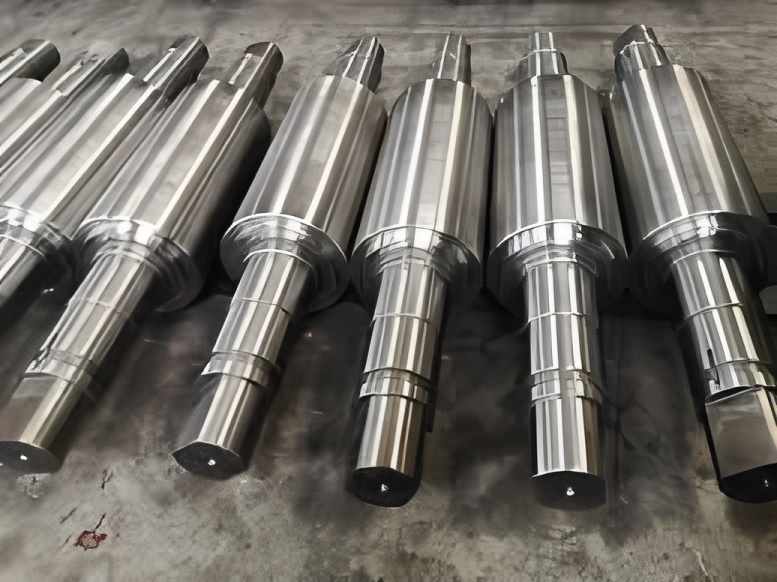To meet the demands of rolling high-strength and ultra-high-strength steel, a new type of cold work roll has been developed through optimized alloy composition and manufacturing processes. This roll demonstrates significantly improved wear resistance in the working layer and enhanced strength-toughness in the roll body. Field application results indicate a 40% increase in average single-cycle rolling tonnage and a 7% reduction in post-service grinding depth. Its performance surpasses that of imported cold work rolls of the same type. The new roll not only fulfills the requirements for rolling high-strength automotive steel but also shows broad application potential in cold rolling silicon steel, stainless steel, and other hard-to-roll sheet materials.
Keywords: Rolling mill rolls, work rolls
Effective tempering of work rolls is essential for the stable production of high-strength steel. Conventional 5% Cr cold-rolled work rolls exhibit insufficient shape control capability, poor wear resistance, and inadequate roughness retention, leading to difficulties in controlling strip shape and surface quality. These limitations shorten roll change cycles, adversely affecting product quality, mill capacity, and production costs, thereby creating a bottleneck in cold-rolled high-strength steel manufacturing. With increasing strength grades and quality requirements for high-end cold-rolled sheets, there is an urgent need to develop new cold-rolled work rolls tailored for high-strength steel and to establish corresponding application technologies.
1. Development of New Cold-Rolled Work Rolls for High-Strength Steel
1.1 Material Design
Cold-rolled work roll materials consist mainly of an iron-based solid solution (martensite) and alloy carbides. Performance depends on the properties and distribution of these phases. Research indicates that matrix strengthening significantly enhances material performance. Non-carbide-forming elements such as Si and Mn dissolve in the martensitic matrix, providing notable hardening and strengthening—more effectively than Cr, Mo, or V. Carbides, as the primary second phase, greatly influence wear resistance based on their type, volume fraction, morphology, size, and distribution.
Building on conventional 5% Cr cold-rolled work roll material, the new design increases the content of solid-solution elements like Si and Mn while optimizing carbide-forming elements such as Cr, Mo, and V. This enhances matrix strength and refines the carbide phase, improving both strength and wear resistance.
1.2 Manufacturing Process
The manufacturing process follows: smelting → forging → post-forging heat treatment → rough machining → preparatory heat treatment → semi-finishing → final heat treatment → finishing.
Smelting involves electric furnace processing → external refining → vacuum treatment → electrode casting → electroslag remelting → electroslag ingot production. Key technologies include argon stirring during vacuum treatment, argon-protected casting for electrodes, and controlled melting speed during electroslag remelting to ensure ingot quality.
Before forging, electroslag ingots undergo high-temperature homogenization to refine precipitated carbides. Forging uses upsetting + elongation compound deformation to achieve a dense structure. Post-forging, the billets receive normalizing and spheroidization annealing to reduce hydrogen content.
After rough turning, ultrasonic testing and quality inspections are conducted. Chemical composition, gas content, harmful elements, macro/microstructure, non-metallic inclusions, and ultrasonic results must meet specifications for the billet to be qualified.
Preparatory heat treatment (quenching and tempering) optimizes carbide morphology and distribution, preps the structure for final heat treatment, and ensures good mechanical properties in the core and neck. Short-cycle austenitizing is used to control core temperature and increase the quenching layer depth.
Final heat treatment employs dual-frequency induction hardening for the working layer and atmospheric circulation furnaces for low-temperature tempering, ensuring high and uniform surface hardness.
1.3 Radial Hardness and Microstructure
Radial hardness distribution is shown in Figure 1, and the working layer microstructure in Figure 2. Quantitative carbide analysis is provided in Table 1.
| Type | Shape | Diameter/μm | EDS Composition |
|---|---|---|---|
| M₇C₃ | Spherical | 100–1000 | 54Fe-37Cr-7V-2Mo |
| MC | Spherical | 30–200 | 83V-12Cr-2.5Mo-2.5Fe |
The cross-sectional microstructure (Figure 3) shows a transition zone about 40 mm below the surface with minor lower bainite and hardness below HRC 60. Hardness decreases further into the transition zone, reaching a minimum ~70 mm below the surface where temperatures remain below the austenite critical point—resulting in spheroidized pearlite at ~HRC 25. Beyond 75 mm, the structure is tempered sorbite and spheroidized pearlite with HRC 25–29.
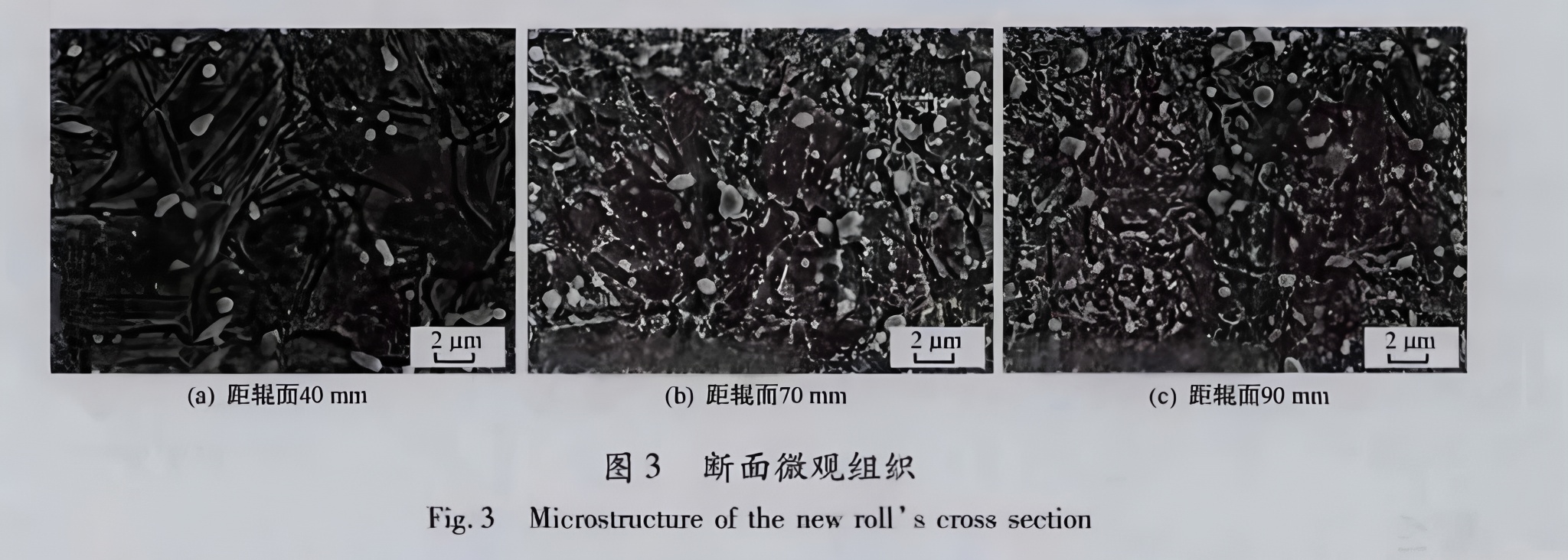
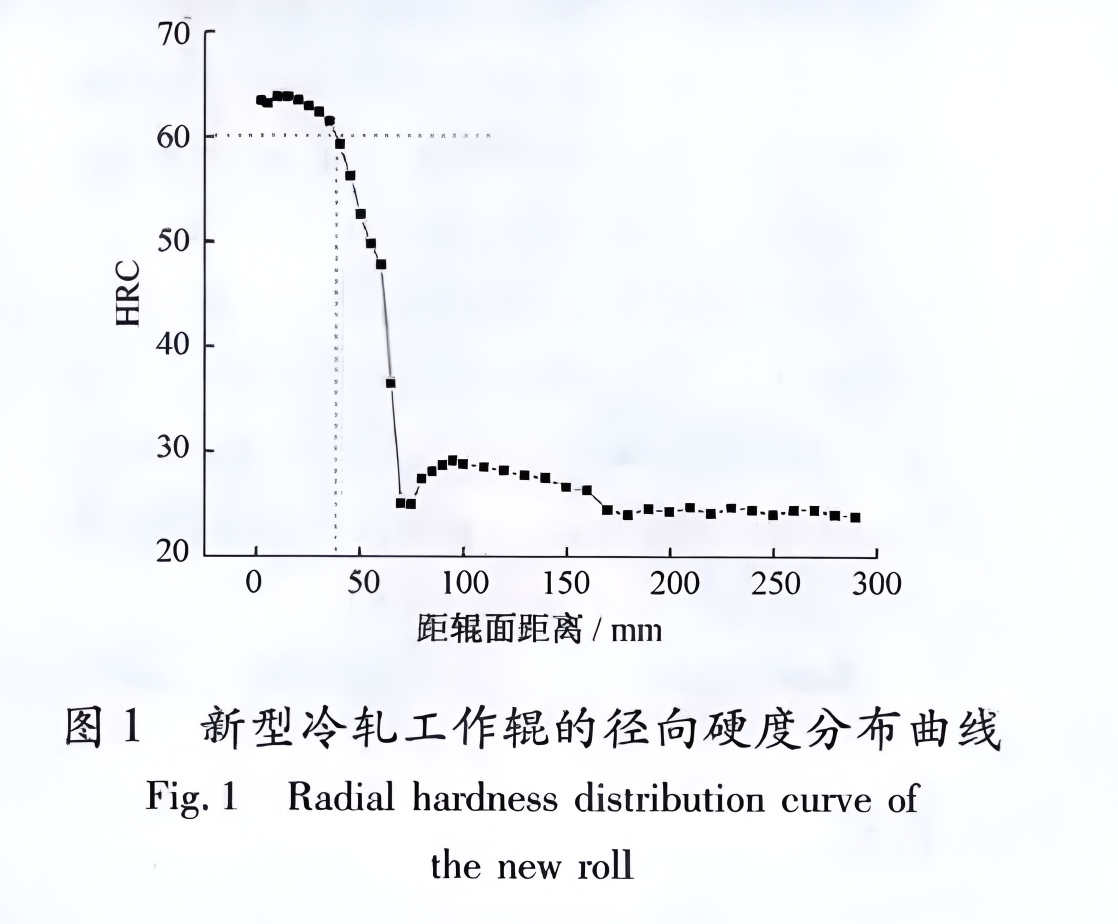
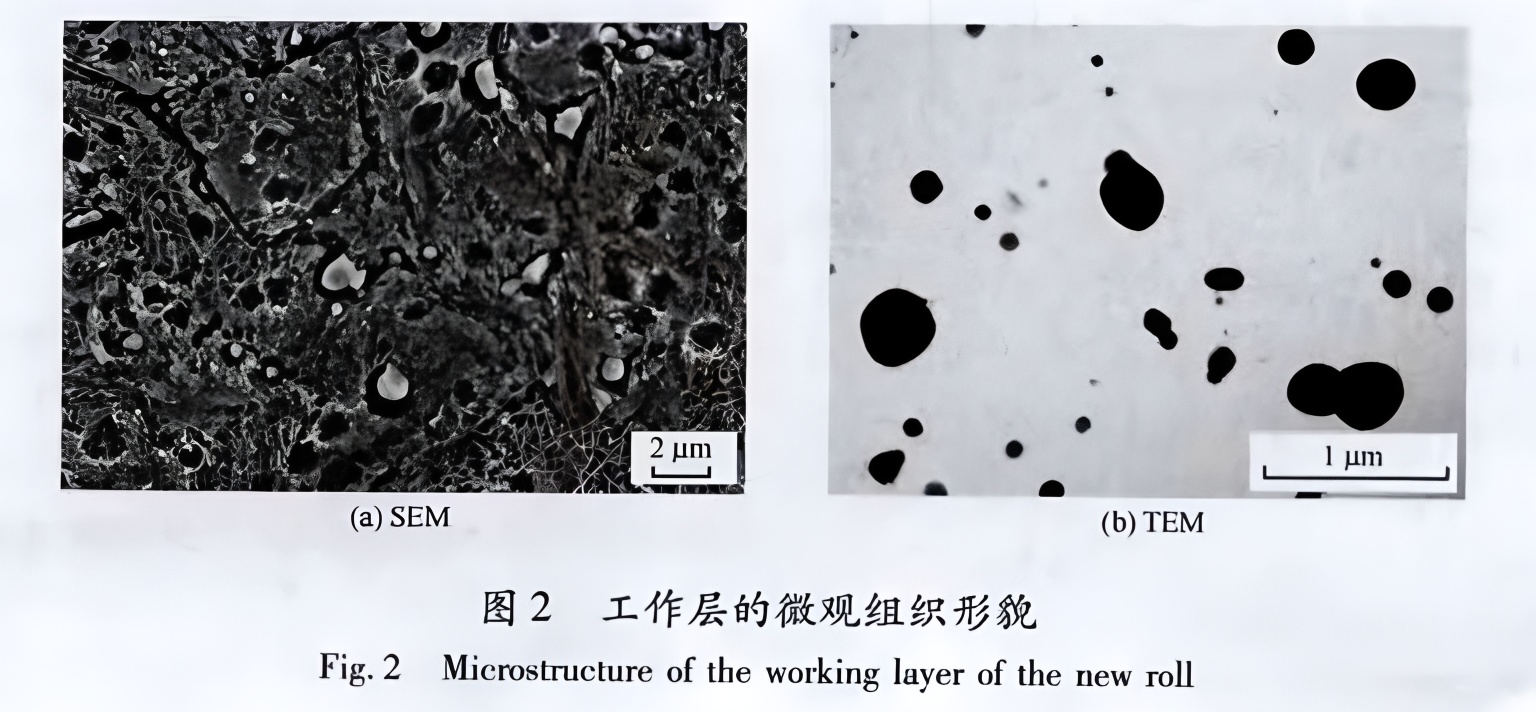
1.4 Performance Characteristics
Mechanical properties of the new and conventional 5% Cr cold-rolled work rolls (measured at the roll neck mid-radius) are compared in Table 2.
| Property | New Work Rolls | Conventional 5% Cr Work Rolls |
|---|---|---|
| Yield Strength (MPa) | 772.5 | 665.0 |
| Tensile Strength (MPa) | 1060 | 955 |
| Elongation (%) | 15.0 | 16.5 |
| Reduction of Area (%) | 36.25 | 42.50 |
| Impact Energy (J) | 12.7 | 9.0 |
The new roll shows a 16% higher yield strength and 11% higher tensile strength than conventional rolls. Impact energy also increases from 9.0 J to 12.7 J, indicating better toughness and deformation resistance.
Wear resistance was evaluated via ring-block tests under oil lubrication, 1000 N load, 200 r/min speed, and 2-hour duration. Results are in Table 3.
| Sample | Average Wear Volume | Hardness Before | Hardness After |
|---|---|---|---|
| New Work Rolls | 0.0530 | 63.1 | 63.1 |
| Conventional 5% Cr Rolls | 0.0531 | 64.0 | 63.5 |
The new rolls exhibit approximately 50% less wear and stable hardness post-wear, indicating improved tempering stability.
2. Application in High-Strength Steel Rolling
Four new cold-rolled work rolls were manufactured and evaluated over six months in the tempering mill of Baosteel’s high-strength steel unit, primarily for producing high-strength, high-surface-quality auto sheets. The rolls underwent standard operation, maintenance, grinding, inspection, surface texturing, and chrome plating.
Compared with six imported rolls under the same conditions, the new rolls achieved higher minimum, maximum, and average single-cycle rolling tonnages—with a 40% increase in average tonnage and a 7% reduction in grinding amount per removal. This confirms their superior performance over imported counterparts.
Conclusion
Through optimized alloy design and manufacturing based on conventional 5% Cr work roll materials, the new cold-rolled work rolls exhibit significant microstructural improvements. Enhanced matrix strength and optimized carbide size and distribution result in greater roll body toughness and working layer wear resistance. outperforming imported同类产品. The new rolls extend service cycles, reduce grinding consumption, and are well-suited for high-strength automotive steel production.
